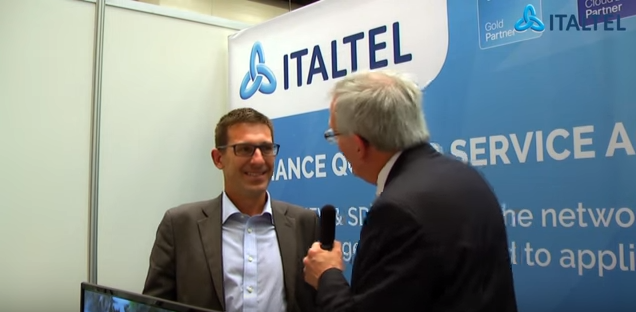NEWS
Realizing NFV’s future
Why collaboration is the vital ingredient in accellerating deployments of NFV and SDN
By Federico Descalzo, Vice President and Chief Marketing Technology Officer at Italtel
 As physical networks become crowded, the use of virtualized infrastructures has provided operators and users with a number of benefits.
As physical networks become crowded, the use of virtualized infrastructures has provided operators and users with a number of benefits.
Here, many functionalities are now implemented without requiring specific HW components, allowing for automated workflows and more bandwidth for demanding services such as OTT platforms.
In addition, the time-to-market for new services is reduced, enabling operators to generate additional revenue streams much more quickly.
But while the benefits provided by virtualization – namely Network Functions Virtualization (NFV) and Software-Defined Networking (SDN) – are clear to see, many challenges still exist between where the technologies are today and widespread adoption.
Perhaps the most important obstacle yet to be overcome is interoperability, with many systems being developed in isolation and therefore not designed to complement each other. This is hindering further take-up of the technologies because operators are used to being able to pick and choose different vendors for different parts of the network, according to different companies’ specialties. Collaboration and standardization of NFV and SDN is therefore vital if the technologies are to become commonplace in networks and their benefits more wide-reaching.
The story so far
Despite the current lack of standardization, there is cause for optimism. Deployments of proprietary NFV and SDN solutions have taken place, with a number of operators upgrading either part of or their entire network in order to realize new services. Vodafone Germany, for example, implemented Vodafone’s ‘Telco Over Cloud’ strategy earlier this year. This project, which we supported via a partnership with worldwide IT leader Cisco, involved a large network evolution program, including NFV and SDN technologies. The result offers next-generation parity features in terms of user, network and regulatory services, as well as invariance of OSS/BSS processes. With early adoptions like this one, best practice can be developed and eventually translated into industry-wide guidelines.
Even more encouragement can be found from predictions being made about the technologies. Infonetics Research, for example, forecasts that global carrier SDN and NFV hardware and software will grow from less than $500 million in 2013 to more than $11 billion by 2018.
Helping to reach that destination is the implementation of Virtualized Network Functions (VNFs), which take advantage of cloud-oriented software architecture and cloud design patterns. Many operators are beginning to look to install these within their networks in a bid to ensure a smooth transition to a fully virtualized system. In response to this demand, Italtel, along with other vendors, is refactoring existing network products to include VNFs. Operating on both the control and user plane, these are now implemented on the NetMatch Session Border Controller (SBC), IMS Core Suite and Embrace, a WebRTC solution introduced last year. This enables us to give an equivalent performance to physical network functions, while newly installed network solutions, based on VoLTE, VoWiFi and WebRTC technologies, provide multimedia services which guarantee high throughput, high reliability and security.
With so much progress, the future of NFV certainly seems to be headed towards widespread adoption but there is a crucial factor missing from this picture: standardization. While attempts are being made – for example, by the European Telecommunications Standards Institute (ETSI) – achieving this could take years. Consequently, in order to accelerate deployment, the onus is on players in the industry to share their approaches and collaborate.
Enter the Intel® Network Builders Program
This is exactly why we have joined more than 150 other companies in the Intel Network Builders program. Designed to accelerate innovation in NFV and SDN solutions, Intel Network Builders is an ecosystem of leading solutions providers which provides access to a comprehensive reference architecture library of proven solutions ready for implementation in production environments. It is designed to build and simplify SDN infrastructure, enhance security and improve efficiency in networking, computing and storage.
Our entry into the program, combined with the refactoring of our network products, will improve our proprietary products portfolio and enhance proposed network solutions. The collaboration also means we have access to the best available technologies.
From an industry perspective, the program is a great opportunity to accelerate the adoption and deployment of NFV and SDN solutions through key elements: advancing open-source community work, open reference designs to expand product development, enabling an open NFV and SDN ecosystem and Proof of Concept and trials collaboration. Through these initiatives, network transformation can be enabled and the delivery and deployment of flexible and low-TCO products to telecom, cloud, and enterprise customers can be facilitated.
Realizing NFV’s future
The early signs of standardization, then, can be seen in the NFV and SDN worlds albeit in its early guise of collaboration. For the technologies to become universally adopted and for networks to keep pace with today’s bandwidth-hungry applications and proliferation of devices, both operators and manufacturers require access to a flourishing ecosystem of NFV and SDN architecture from which to develop reference models. With this, and further cooperation to generate agreed standards, there is no reason why NFV and its benefits cannot become widespread in networks and, in turn, revolutionize operators’ businesses.
